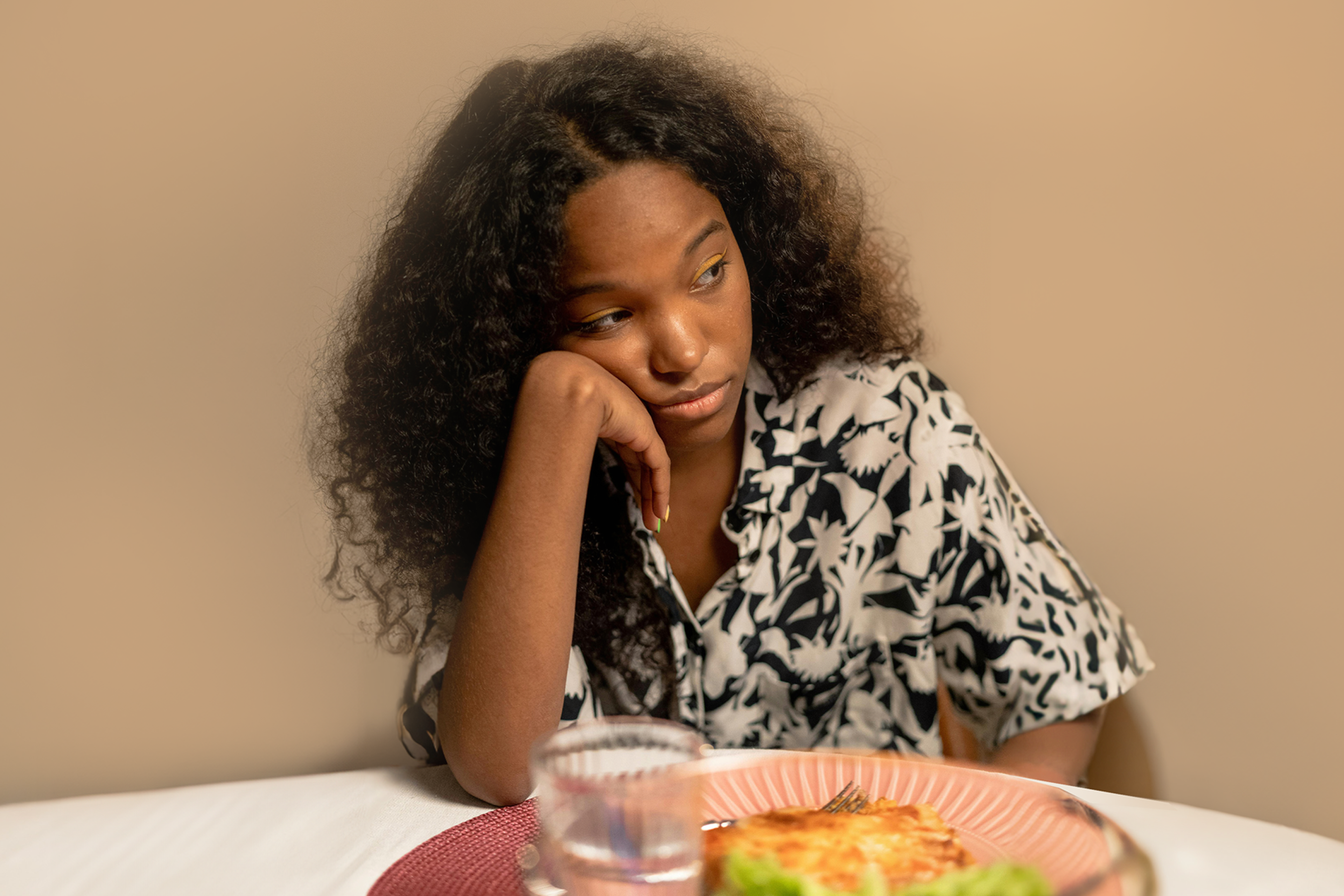


Alcohol and eating disorders are very connected. Fifty percent of people with eating disorders have also abused alcohol or illicit drugs. Perhaps even more surprising is what that statistic means: the rate of substance use disorders in people with eating disorders is five times higher than in the general population. The numbers go both ways: 35% of individuals with substance use issues have also had an eating disorder (eleven times higher than the general population). Let's look more closely at the relationship between eating disorders and alcohol use.
Why do eating disorders and alcohol abuse so frequently go together?
"Many people with eating disorders use food restriction and binge eating as a way to regulate emotions, albeit temporarily," says Cara Bohon, PhD and Senior Vice President of Clinical Programs at Equip. "We see the same thing in substance use disorders, where substances are used to self-medicate from particularly strong negative emotions. And these things work in the moment, but often lead to new emotions of guilt or shame or biological responses of hunger, fullness or chemical dependence and withdrawal. The new emotions then lead to more eating disorder behaviors or substance use, causing a cycle that is difficult to stop without a supportive environment."
Writer and advocate Lindsey Hall is in recovery from an eating disorder and has publicly spoken about “drunkorexia,” meaning the role alcohol played in her anorexia and bulimia. Hall says that people aren’t often aware of the overlap between eating disorders and substance abuse, but based on her own experience, the conditions can coincide for many reasons. “A lot of people worry about calories in alcohol and there are plenty of people deep in an eating disorder who don’t drink for that reason alone,” she says. “But I think there are a lot of us who struggle with anxiety or impulse control or self-destructive behaviors. So we drink to navigate the eating disorder by trying to silence its raging screams in our head that go on all day every day.”
Eating disorder and alcohol use disorder risk factors
Hall isn’t alone: research suggests that eating disorders and substance use disorders may frequently co-occur because they share some key risk factors. As one multicenter study found, individuals with eating disorders and alcohol use disorders (AUD) reported, some of the most common risk factors for both eating disorders and alcohol use disorders are:
- Depressive and anxiety disorders
- Certain personality disorders
- Impulsivity
- Perfectionism traits
- Family history
- Low self-esteem
- Childhood trauma
- Post traumatic stress disorder (PTSD)
The relationship between trauma and these disorders is worth highlighting. In fact, people with both an eating disorder and substance abuse disorder have higher rates of childhood trauma and post traumatic stress disorder (PTSD) than those with either disorder alone.
Bulimia and alcohol use disorder
Bulimia nervosa is an eating disorder where someone uncontrollably eats a lot of food at once (called bingeing) and then tries to get rid of the food through vomiting, laxative misuse, or excessive exercise (called purging.) It’s also possible to binge drink, which is defined as 4 or 5 drinks within a short period of time for women and men respectively. Bulimia and alcohol use disorder are some of the most common co-occurring conditions. For people who experience both bulimia and AUD, they may binge on both food and alcohol, and then purge both as well.
Binge eating disorder and alcohol use disorder
Binge eating disorder (BED) is the most common eating disorder in the U.S. It’s defined by persistent “bingeing” behavior, meaning eating a large amount of food with a feeling of being out of control. Unlike bulimia, it doesn’t include purging behaviors. For people with BED and AUD, they may feel like one behavior triggers another. For example, drinking excessively may lead to an intensified craving to binge eat. Alternatively, a binge eating episode often leads to feelings of shame which someone may drink alcohol in an effort to numb those feelings.
Anorexia and alcohol use disorder
Anorexia nervosa is an eating disorder characterized by extreme food restriction and fear of weight gain. There are two subtypes of anorexia: restricting and binge/purge subtype. Those who fall into the binge/purge category may develop alcohol use disorder due to shared risk factors of impulsivity and binge cycles. For those who fall into the restricting subtype, it can be common for people to use alcohol as a way of suppressing appetite.
It’s also worth noting that drinking can change your metabolism, and in extreme cases this can lead to malnutrition which could exacerbate an existing eating disorder. Vise versa, drinking heavily while restricting food intake can cause the effects of alcohol to be accelerated.
What is “Drunkorexia?”
Drunkorexia is a non-diagnosable slang term that refers to the concept of eating less in order to consume more calories through drinking. This practice is incredibly dangerous and can have long-term side effects, including the development of an eating disorder and/or alcohol use disorder. Diet culture and drinking pressures may contribute to the desire to practice “drunkorexia,” and getting to the root of these factors may help in breaking out of this harmful behavior.

How substance abuse can become intertwined with the eating disorder
Substances and eating disorder behaviors serve a similar purpose, and at some point, these behaviors were effective. If you are feeling difficult emotions—guilt, sadness, frustration, worry—drinking, binge eating, vomiting, shoplifting, or having a tantrum will provide some instant relief. These are sometimes called “maladaptive” behaviors because while they work, in the long run, they create more problems than they solve.
If someone has found comfort in these maladaptive behaviors and it has worked as a tool to help manage emotions, there eventually comes a time when this “tool” becomes problematic and the person tries to stop. Unfortunately, even if someone stops drinking, they can’t stop hard emotions. And it may become even more difficult to experience hard emotions because of the lack of practice. The easiest thing to do is to choose another maladaptive behavior. This becomes “whack-a-mole” like the old arcade game: when one mole goes down, another pops up. People start using substances when they are trying to stop bingeing and purging, or use eating disorder behaviors when they are trying to become sober. It is the definition of a vicious cycle.
How to treat co-occurring eating disorders and alcohol abuse
For long-term recovery, eating disorders and substance use disorders (SUDs) need to be treated simultaneously. We know that for many patients, it can be tempting to get treatment for only one—and in certain cases, it may make sense to focus on one condition initially in order to ensure patient safety and the effectiveness of treatment overall (for instance, if someone cannot show up to eating disorder treatment sober, we would need to prioritize substance use disorder treatment).
But in most cases, addressing both conditions at once leads to better, more sustainable results—and choosing one over the other can backfire. For instance, someone may decide to get treatment for alcohol use, and then become less willing to part with their eating disorder, which is a more culturally acceptable coping mechanism. Many people go into treatment for one disorder, and when they come out the other disorder becomes more prominent.
If you're struggling in these ways, it’s important that you simultaneously get treatment for both your eating disorder and your substance use. And families: help your loved one to find treatment providers that recognize the two are inextricably linked. In treatment, you will learn skills that combat all your urges, so that in recovery you aren’t replacing drinking with eating disorder behaviors, nor replacing eating disorder behaviors with using substances. In recovery, you will be replacing all the behaviors that don’t serve you, with things that bring you closer to joy and the life that you want to live.
If someone you love is already struggling with an eating disorder, substance use disorder, or both, comprehensive support and evidence-based treatment is key.







